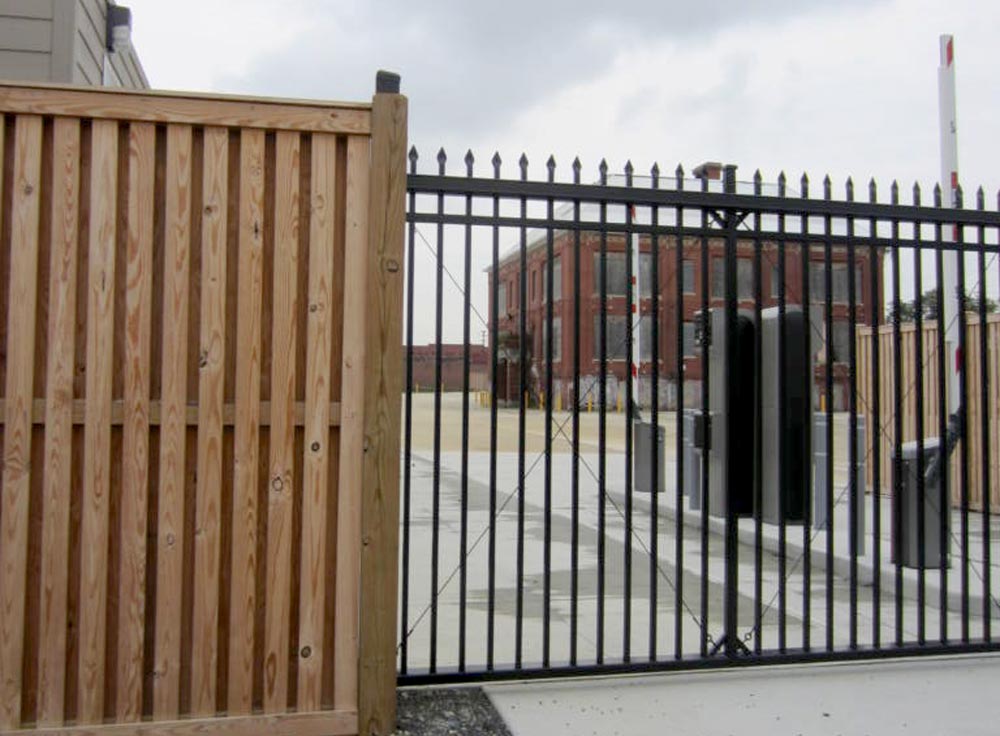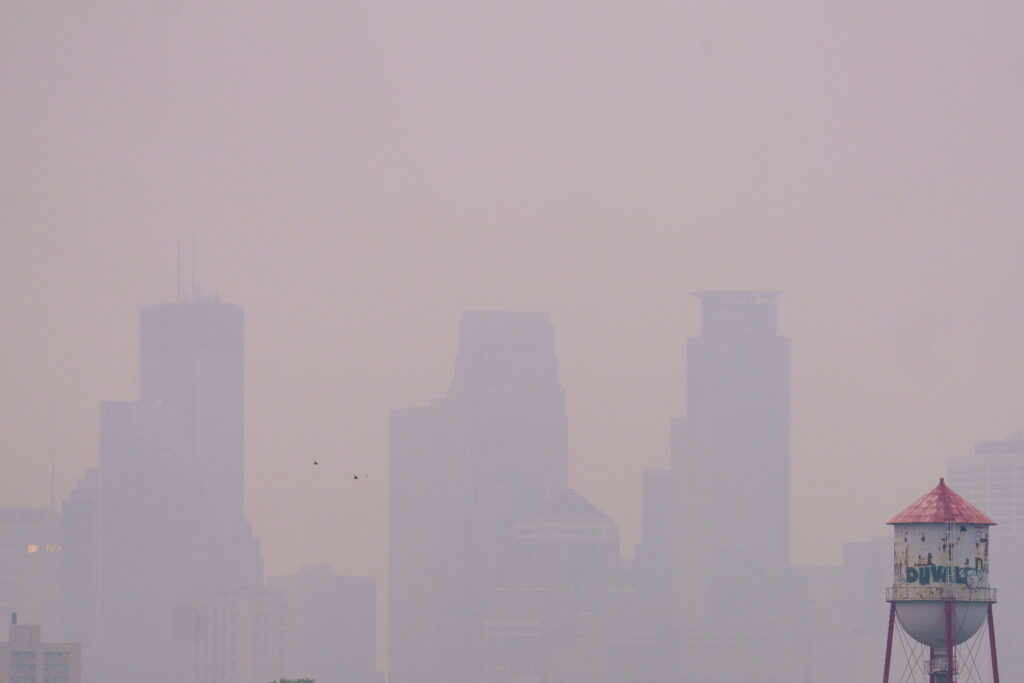Three children race through the intersection of Providence and Capitol streets NE. Two kids ride scooters and one is on a bike. An oncoming taxi stops short.
Danger seen, crisis averted.
But traffic pollution poses a more insidious threat to neighborhood health, local activists say. And it is proving harder to stop than a hurrying cab.
In the low-income community where many residents already suffer from respiratory ailments, the Ivy City Civic Association (ICCA) is fighting to keep the city from opening a new tour bus parking lot. The neighborhood is hemmed in by busy New York Ave.NE as well as train yards, warehouses and city vehicle lots. And advocates worry the increased fumes from the charter buses will only make health problems worse.
“We can’t just let you come in and kill us,” says ICCA president Alicia Swanson-Canty, 40, who has spent her whole life in Ivy City. She worries that current pollution levels in the neighborhood are taking a particularly heavy toll on elders, including her mother.
On December 10, 2012, Superior Court Judge Judith Macaluso buoyed the advocates in their fight against city hall. She ruled that city officials violated the law when they moved forward with plans for the bus depot without getting the required input from the local Advisory Neighborhood Commission (ANC) or doing a mandated environmental review.
But now, the Ivy City activists are bracing for the next round of their battle.
City Mayor Vincent Gray is appealing the ruling and his day in court is is scheduled for Sept. 17. The office of the mayor would offer no comment for this story, except to say the city is pursuing the requirements specified in the injunction.
Advocates hope the December ruling will stand. And they hope for more. Their ultimate goal is seeing the former Alexander Crummell School, where the bus lot is proposed, transformed into a community or recreation center that could offer resources that are now in short supply such as a safe play area for kids and adult education classes.
“If they’re trying to make this a community, we need a rec,” said Ivy City resident Juice Williams, age 39. “We don’t need buses, we need something productive: job training, GED classes…”
His fellow residents Nate Wales and David Hayes agreed that a community center would be a haven for children like the ones they had just watched cross the street in front of the taxi.
“They’re not doing anything but chasing each other in the same circles,” Wales says of the kids.
Hayes could not help but compare the lack of services in Ivy City to the resources in other neighborhoods. “Brentwood has a work program, Rosedale has a rec, Edgewood has a rec…”
Wales added that the presence of a juvenile detention center does not send a hopeful message to young people. “There’s nothing to do, but they’re ready for you when you get destructive.”
Swanson-Canty said she believes that workforce development programs could help both longtime residents and men staying at the New York Avenue Shelter, which is also located in the neighborhood. She pointed out that the city has been promising a community center to Ivy City for years.
“Just give us what you said you would,” said Swanson-Canty. Most recently the city’s 2006 comprehensive economic development plan called for a community center and additional green space in Ivy City.
The neighborhood activists have found support from Parisa Narouzi, founder and director of grassroots community organizing group Empower DC. In fact, Narouzi’s initial work with Ivy City is what moved her to start the group.
“I credit Ivy City with being the place I learned the most about community organizing,” said Narouzi. “It’s really challenging because everything is stacked against the community.”
Nontheless, city officials have argued the Crummell School site is needed for charter buses. The vehicles that would be parking at the school were displaced from Union Station in 2012 when inner city buses moved there from the 1st Street NE Greyhound station. Neighbors of the Greyhound facility have said they don’t want the bus depot either and Ivy City advocates say they can sympathize.
“We don’t want to push our community’s problems off to someone else’s” said Swanson-Canty. “We want the mayor to solve this properly.” She still wonders why a portion of the RFK Stadium lots could not be utilized. City officials have said that they considered that option but ruled it out due to uncertainty about the long-term availability of the site.
In her December injunction, Judge Macaluso ruled that city officials should have reached out to Ivy City’s ANC 5B in developing plans for the bus lot.
City officials argued that the city did notify Ivy City’s neighborhood commission, ANC 5B. The notice was delivered in November 2011 in the form of a 97-page list of upcoming city projects. The plans for the Crummell lot were listed on page 63.
In testimony at the December hearing, Michael Durso, a project manager from the Office of the Deputy Mayor for Planning and Economic Development noted that city officials ended up approaching the neighborhood civic association instead of the ANC in December 2011, because it was “more vocal.”
In response, Judge Macaluso noted that that by “regard[ing] ANC 5B as ‘less vocal’ … the District.created a self-fulfilling prophecy that the ANC would remain so.”
Civic association member Swanson-Canty recalls the ICCA’s presence at the first meeting, held in December of 2011.
“We were there, but small in number,” she said. While attendance and resistance from the community grew at subsequent meetings, Swanson-Canty said she and her neighbors were told the project was going to move forward regardless.
“They really ignored our vote,” agreed Williams, her childhood friend and neighbor.
Narouzi said that if the Ivy City ruling is allowed to stand, it will benefit other neighborhoods as well.
“The city violates the ANC statute all over the place,” Narouzi claims. “Our case gives a legal history to this, to say no actually that’s not okay.”
As planned, up to 65 buses will be allowed to park at the Ivy City facility at any given time, A lounge area would accommodate drivers waiting to pick up their groups of tourists and other patrons. City officials point out that the facility’s operating hours, from 7a.m. to 7 p.m., and access routes which have been restricted to main roads are designed to prevent excess pollution. District law already prohibits vehicles from idling for longer than three minutes.
But opponents say the city has not provided reliable estimates about how many buses would be laying over in the lot each day.
Narouzi has pulled together a team of students and professors from four local universities to take a closer look at Ivy City’s air quality. The George Washington University most recently joined the team, along with Howard, Trinity, and the University of Maryland. The involvement in the project has given the scholars a sense of the importance of their skills.
“Parisa has gotten all of us head-in-the-clouds scientists to work for real change in the community,” said Howard University atmospheric science expert and professor Vernon Morris.
“She’s just doing a fantastic job conveying the sense of urgency.”
A pungent smell in the community’s air gives Morris a sense that pollution is present but the scientific evidence is still inconclusive. At the December 2012 hearing, Morris was only able to provide 10 days worth of air quality measurements. Instead of revealing unacceptably high levels of pollution, both sides agreed the measurements came in below the limits established by the U.S. Environmental Protection Agency.
Yet a far more extensive study is needed to truly understand the air quality in the community, said Morris.
“In order to answer the questions of the community, you really need to conduct a long term study, 1 year plus, to gauge the true effects,” said Morris. “Establishing a baseline is a difficult thing.”
Such a study is necessary because many pollutants are seasonal – depending upon the industries and activities that operate at different times of the year, and at what frequency.
“The timeline the city is moving on really doesn’t allow for proper scientific investigation to take place,” said Morris.
Periodic studies on levels of particulate matter such as black carbon and formaldehyde have been ongoing, but a full year long study has not been done. Morris’ own monitoring equipment was shipped off for other research before being returned to allow him to continue to study the air quality in Ivy City. The nearest city monitoring station is located at River Terrace, over two miles away.
Looking ahead, Swanson-Canty said the neighborhood is not giving up, regardless of what happens with the Mayor’s appeal.
“We’re gonna keep fighting,” she said, “even if it means lining up residents in the street to keep the buses from coming in.”





